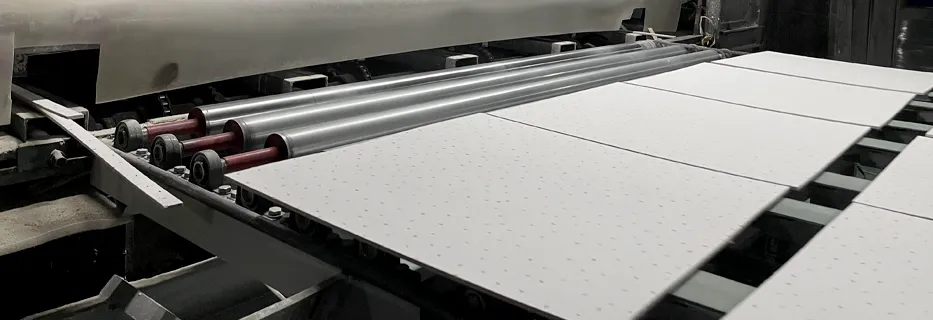- Afrikaans
- Albanian
- Amharic
- Arabic
- Armenian
- Azerbaijani
- Basque
- Belarusian
- Bengali
- Bosnian
- Bulgarian
- Catalan
- Cebuano
- Corsican
- Croatian
- Czech
- Danish
- Dutch
- English
- Esperanto
- Estonian
- French
- German
- Greek
- Hindi
- Indonesian
- irish
- Italian
- Japanese
- Korean
- Lao
- Malay
- Myanmar
- Norwegian
- Norwegian
- Polish
- Portuguese
- Romanian
- Russian
- Serbian
- Spanish
- Swedish
- Thai
- Turkish
- Ukrainian
- Uzbek
- Vietnamese
Гру . 02, 2024 06:49 Back to list
Exploring Innovative Designs for Cross Tee Ceiling Systems in Modern Architecture
Understanding Cross Tee Ceilings A Comprehensive Guide
In the realm of modern architecture and interior design, the choice of ceiling type plays a critical role in the overall aesthetic and functionality of a space. One such ceiling design that has garnered significant attention for its versatility and practicality is the cross tee ceiling. This type of ceiling not only enhances the visual appeal of interiors but also serves various practical purposes, making it a popular choice in both residential and commercial buildings.
What is a Cross Tee Ceiling?
A cross tee ceiling, also known as a grid ceiling or drop ceiling, is characterized by a suspended framework that integrates horizontal and vertical supports, forming a grid-like pattern. The framework consists of main runners (longitudinal supports) and cross tees (perpendicular supports) that create a uniform grid where ceiling panels can be installed. The panels used in these ceilings are typically lightweight materials such as mineral fiber, fiberglass, or drywall, which can be easily replaced or modified as needed.
Benefits of Cross Tee Ceilings
1. Acoustic Performance One of the standout features of cross tee ceilings is their ability to improve acoustic performance in a room. The materials used in the panels often have sound-absorbing qualities, which help reduce noise levels and create a quieter environment. This characteristic makes cross tee ceilings particularly popular in spaces like offices, schools, and auditoriums.
2. Concealment of Services Cross tee ceilings provide an effective means of hiding unsightly wiring, plumbing, ductwork, and other mechanical elements. The suspended design creates a space between the original ceiling and the new structure, allowing for easier access to these essential services for maintenance and repairs without disrupting the overall aesthetic of the room.
cross tee ceiling

3. Ease of Installation and Maintenance The installation of a cross tee ceiling is relatively straightforward and can often be completed in a fraction of the time it takes to install traditional ceilings. Additionally, should a panel become damaged or stained, it can be easily removed and replaced without affecting the surrounding panels. This convenience is a significant advantage in high-traffic areas where wear and tear is more prevalent.
4. Design Flexibility Cross tee ceilings come in various styles, colors, and textures, allowing designers to create a unique look that complements the overall theme of the space. Whether you're aiming for a modern, minimalist aesthetic or a more traditional style, the versatility of cross tee ceilings can help you achieve your vision.
Applications of Cross Tee Ceilings
Cross tee ceilings are widely utilized in various settings. In commercial spaces, such as offices and retail stores, they provide an attractive and functional solution to ceiling design. In educational institutions, these ceilings enhance acoustic performance while allowing for effective modular lighting solutions. In residential homes, cross tee ceilings can often be found in basements or utility rooms, offering a modern way to finish a space while concealing unsightly elements.
Final Thoughts
Ultimately, cross tee ceilings represent a seamless blend of functionality and aesthetics. Their ability to improve sound quality, conceal mechanicals, and offer design flexibility make them a superior choice for a variety of applications. Whether you are planning a new construction project or looking to revitalize an existing space, considering a cross tee ceiling may offer the perfect solution to meet your design and practical needs. As interior design continues to evolve, the importance of versatile, functional solutions like cross tee ceilings will only grow, making them a staple in modern architecture.
-
Transform Interiors with PVC Gypsum Ceiling: A Stylish, Durable, and Moisture-Resistant SolutionNewsMay.19,2025
-
The Smart Interior Upgrade: Discover the Durability and Versatility of Gypsum Ceiling Access Panel SolutionsNewsMay.19,2025
-
The Smart Choice for Interior Design: Discover the Value of PVC Gypsum Ceiling SolutionsNewsMay.19,2025
-
Mineral Fiber Ceiling Tiles: The Smart Blend of Performance and AestheticsNewsMay.19,2025
-
Mineral Fiber Ceiling Tiles: The Superior Choice Over Gypsum for Sound and Fire SafetyNewsMay.19,2025
-
Mineral Fiber Ceiling Tiles: Eco-Friendly Strength and Style for Every CeilingNewsMay.19,2025







